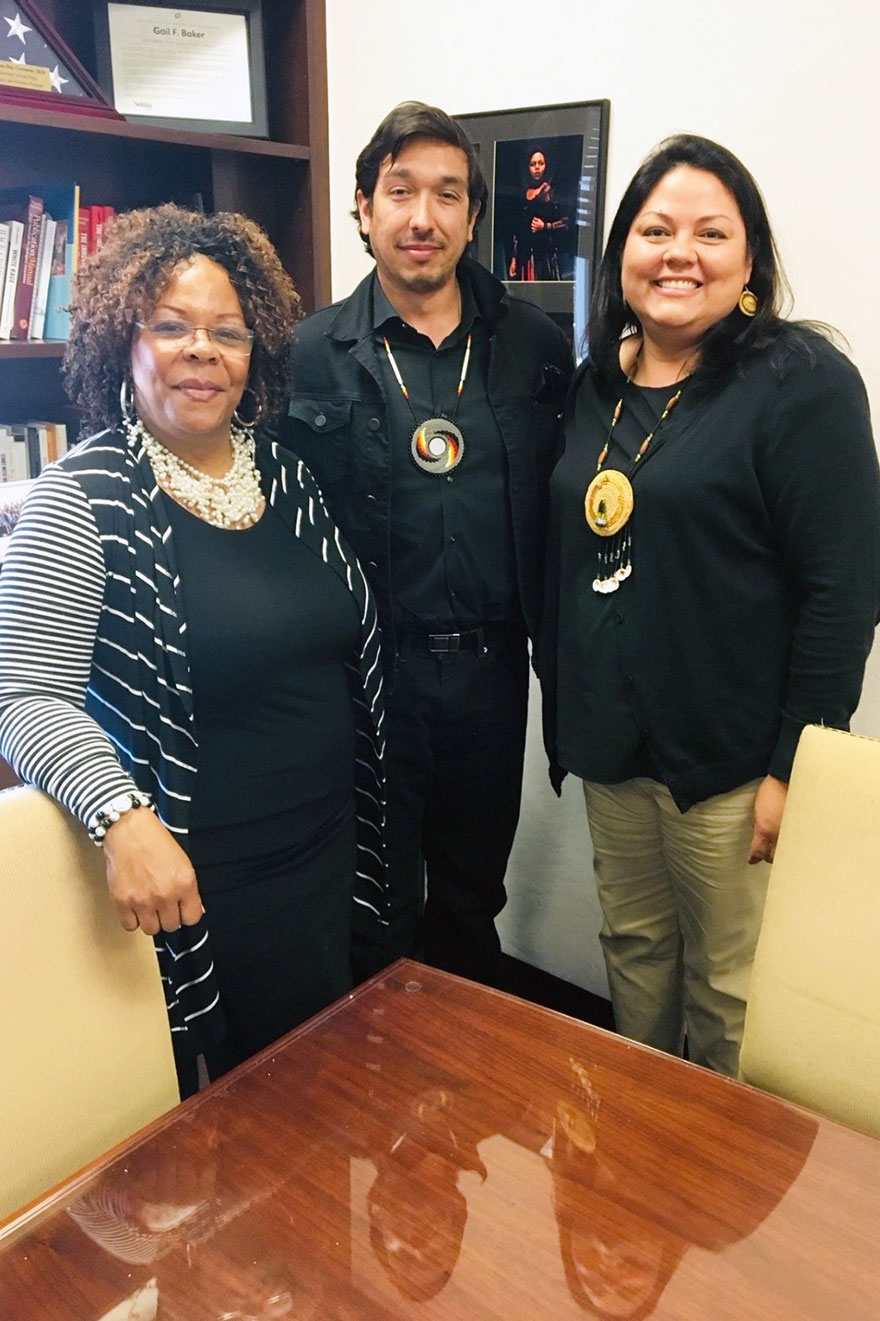The repatriation of indigenous ancestors and culturally significant Native American items identified under the Native American Graves Protection Act (NAGPRA) will undoubtedly continue for generations.
Dr. Chip Colwell, a veteran in this line of work, in Plundered Skulls and Stolen Spirits: Inside the Fight to Reclaim Native America’s Culture, stated, “… the law [NAGPRA] has allowed for more than 50,000 sets of human remains to be reclaimed…” and projected, based on research, that this process would likely take 238 years to accomplish this humanitarian effort.
Acknowledging this overwhelming amount of responsibility, the Southern Ute Indian Tribe (SUIT), like most tribes and Native Hawaiian organizations, view the protection and repatriation of ancestors as a top priority.
NAGPRA Coordinator, Cassandra Atencio and NAGPRA Coordinator Apprentice, Garrett W. Briggs view NAGPRA repatriations as a paramount responsibility.
“We owe this to our ancestors who came before us. If it wasn’t for their resilience and sacrifice, we would not be here today,” Briggs stated, “It is an opportunity to honor them by returning them to Mother Earth. The NAGPRA office hopes the reburial of ancestors allows them to be at peace and with their loved ones who also walked-on.”
On Sept. 30, Briggs traveled to San Diego, Calif. to repatriate an ancestor from the University of San Diego (USD).
USD prof. Dr. Derrick Cartwright notified the SUIT of the completion of their inventory of the collections on December 12, 2017. NAGPRA mandates federal agencies and institutions who have received direct or indirect federal funds and who have collections consisting of artifacts, historic objects, and or human remains to complete an inventory and identification process. Upon completion, institutions submit a report of their findings, known as a Notice of Inventory Completion (NIC), to be published by the National Register, the National NAGPRA Committee and certain Federally Recognized Indian Tribes or Native Hawaiian Organizations, based on cultural information gathered from their inventory.
In January the SUIT NAGPRA office entered into consultation with USD. Upon reviewing the NIC and consulting with Southern Ute elder and mentor, Alden Naranjo, Atencio and Briggs filed an official repatriation request. As a result, NPS published a Notice of Intent to Repatriate in the Federal Register on July 12 for review and comment by other potential Tribal claimants.
The University of San Diego provided money to further consultation and complete the repatriation of the ancestor to the SUIT. USD paid for transportation and all applicable travel costs, per-diem and hotel stay, to fly Briggs to San Diego, Calif. The legal transfer of the ancestor from USD to SUIT occurred on Tuesday, Oct. 1.
Briggs met with the several USD representatives during his visit. His first meeting was with Dr. Cartwright, who facilitated the repatriation, as well as Katherine Norlard, Operations Coordinator for University Galleries, prior to preparing the ancestor for transportation in a secure facility. After ensuring the ancestor was secure for transport, Briggs met Dr. Gail F. Baker, USD’s Vice President and Provost, Perse Lewis, USD Tribal Liaison and Professor of Ethnic Studies; and Associate Provost Jennifer Zwolinski, and Joyce Antorietto. The official paperwork was processed on the same day and the transfer of the ancestor to the Tribe was complete.
The ancestor was cared for by staff at the Canyons of the Ancients Visitor Center in Dolores, Colo., On Wednesday, Oct. 2, prior to attending consultation in Denver, Briggs met with Bridget Ambler, Supervisory Museum Curator of Canyons of the Ancients, and signed a Temporary Repository Agreement. The reburial location was identified in coordination with the Colorado Lands Repatriation and Reinternment Workgroup and occurred a week later, on Tuesday, Oct. 9. Ute Mountain Ute Tribal Historic Preservation Officer, Terry Knight and Ute Indian Tribe Cultural Rights and Protection Officer, Betsy Chapoose assisted in the reburial.
Dr. Cartwright emphasized the importance of this process, “I can’t imagine anything more important, institutionally or personally, than ensuring the safe return of the ancestor to their home in Colorado. The insensitivity that led others to disturb the original burial site was regrettable and dismaying. On behalf of everyone at the University of San Diego, I wish to express my gratitude to Alden Naranjo, Cassandra Atencio, and especially Garrett Briggs, for their assistance in accomplishing this repatriation which involved many hours and many thoughtful communications. It has been an honor to work with the Southern Ute Tribe’s leadership toward this successful end.”

